Endangered Animals #10 The White-Rumped Vulture
Back again after a couple of weeks off and hopefully i'll be able to post as normal from now on!
The animal I've opted to highlight this week is the White-Rumped Vulture, now, from a publicly funded conservation standpoint they sadly tick a couple of boxes that reduces their chances of survival, firstly they are a Bird, and in general Birds receive less attention than an equally endangered Mammal, and secondly, they aren't fluffy nor cute, people in general likely view Vultures as mangy scavengers, so much so that the term Vulture can often be used as a derogatory remark.
In fact that couldn't be further from the truth, these magnificent animals play a vital role in the overall health of the ecosystem they inhabit and deserve far more praise and positive attention than their reputation allows them, sadly for this particular species, without the necessary intervention their extinction will be a formality.
Description
The White-Rumped Vulture (Gyps bengalensis) is a medium sized species of old world Vulture within the genus Gyps and the family Accipitridae, it has all of the characteristics and traits that are synonymous with most Vultures, including a bald neck and head, broad wings and very short tail feathers.
They are the smallest member of bird within the Gyps genus, they are still however very large birds, on average they weigh roughly 6 kg’s though larger individuals can weigh up to 8 kg’s, they stand up to one metre tall and have a wingspan of up to 2.6 metres.
Their closest living relative is the much larger European Griffon Vulture (Gyps fulvus), an animal that is widespread across temperate regions of Europe and Asia and is rated as least concern on the IUCN red list, they are thought to have diverted on their evolutionary path roughly 2-4 million years ago and continue to coexist in some regions of Asia.
Most of their plumage is black/dark brown in its colouration, their name derives from their white coloured rump, they also have a white neck-ruff and underwing-coverts which can be observed when the Vulture is either gliding or stretching its wings.
They are classified as a bird of prey and have a raptor beak that is designed for ripping and tearing meat from carcasses, most of their bill is a silvery colour with dark blotches around the edges, this blends seamlessly into the colour of their head and neck which is almost always a dark brown colour.
Compared to most other birds of prey they have quite small talons in relation to their overall size, this is a common trait amongst Vultures as they do not use their talons for hunting, instead their main function is to afford the Vulture some grip when perching on tree branches or when pushing off of the ground to initiate flight.
Like most birds of prey, they have very good eyesight and are almost entirely reliant on it in order to locate feeding opportunities, whilst some species of Vulture do possess a keen sense of smell, the White-Rumped Vulture is not thought to have a finely attuned sense of smell, behavioural studies have cited that Vultures often leave their roosting sites in the event that they spot other vultures circling over a carcass.
The White-Rumped Vulture also possess a wide range of vocal capabilities, they mainly exhibit vocalisations around carcasses as a method of disputing over feeding opportunities, the vocalisations include croaks, groans, hisses and chattering of their bills, conflict between Vultures is rare and it appears that their vocal communications are an efficient tool in de-escalating any issues.
Habitat and Diet
The White-Rumped Vulture can be found in India, Pakistan, Bangladesh, Nepal, Bhutan, Myanmar, Thailand, Laos and Cambodia, they were once thought to be the most numerous bird of prey on the planet, though in recent years their numbers have declined catastrophically.
The preferred habitat of the Vulture consists of open grasslands and flat plains though they can also inhabit hilly regions and sparse woodland locations, the reasons for the Vulture favouring flat/open terrain is attributed to their method for locating food sources.
They spend the majority of their time roosting on tree branches, as many as 30 Vultures may roost on a single tree where they can be observed grooming and preening one and other, their choice to roost on a tree often results the death of the tree, this is because their faecal matter is highly acidic, a group of Vultures can corrode and kill a tree within a matter of weeks, this is the reason why most roost sites have bare branches.
Their feeding behaviours only begin after the morning sun has heated up the air, in cold weather they are very inefficient flyers and may not be able to sustain flight at all, they are reliant on the uprising of warm air to generate extra lift which allows them to soar with very little movement of their wings.
The White-Rumped Vulture relies heavily on its vision to locate food, this is a common trait of all birds of prey, unlike many birds of prey however, the Vulture is almost entirely a scavenger of Carrion, as previously mentioned they do not possess the talons to efficiently catch prey, they also lack manoeuvrability due to their size and weight which when partnered with their low flight speed renders them almost useless for catching prey.
To locate prey they soar at altitudes between 100 and 300 metres, once they’ve spotted a carcass they will either swoop down to it or will circle it, their choice will be made depending on the state of the carcass, if predatory species are feeding they may wait their turn, they may also wait to feed if the carcass is of a thick skinned animal that they would be unable to tear open.
A staple diet of the Vulture previously consisted of the corpses of large Ungulate species native to the region, sadly for the Vulture the number of large Ungulates in the wild has dropped dramatically over the past few centuries as a result of rapid human expansion, their diet now consists largely of deceased domestic livestock, a trait that has evidently led to their demise which we will cover further on in the article.
The feeding habits of the White-Rumped Vulture are similar to most other Vultures in that they gorge feed until their large crops are full, this often leaves the Vultures unable to move or fly effectively for a period of a few hours, whilst they digest their food they will roost next to the feeding site, a group of Vultures may be able to completely strip a carcass of its meat in under a day.
Reproduction
The breeding season for the White-Rumped Vulture falls specifically between October and March/April, the Vultures share a common trait with other birds of prey in that they are monogamous and will generally pair for life, due to their non-migratory lifestyle the pair will likely spend time with one and other year-round.
Unpaired Vultures must first engage in courtship, courtship is not as flamboyant as in some Avian species and mainly consists of the male rubbing his bill against the head and neck area of the female, he may also spread his wings and stretch his neck out to display his size.
During courtship the male will also be constructing a nesting area, White-Rumped Vultures seem to always favour a large tree as a nesting site and will generally only create nests on rock-faces in areas where trees are absent, the nest begins with just a few twigs but eventually leads to a nest roughly 1 metre in diameter and 0.15-0.2 metres thick, he will also decorate the outer edges of the next with green foliage, it unclear whether this is to create a form of camouflage or to simply impress a prospective mate.
Once accepted the female will invite the male to copulate, he will then proceed to mount her and will more often than not gently hold her head within his bill, the event is normally completed within a few minutes and the female will eventually lay a single white egg at the nest site normally around January time, like many Birds if the egg is damaged or lost after being laid the female will often destroy the nesting site and will display distressing behaviour that may include erratic movements as well as abnormal roosting vocalisations.
The successfully laid egg will weigh roughly 200 grams and will need to be incubated for 35-40 days, the task of incubation is carried out by both the male and female and they will alternate as each one needs to feed, once the egg is ready to hatch a chick will emerged covered in grey downy feathers.
The Chick is already equipped with an impressive bill that can tear away at small chunks of meat, unlike many Bird species that feed their young through regurgitation from their crop, Vultures instead bring back unconsumed chunks of meat for their Chick, the Chick will be entirely reliant on its parents for feeding and will not leave the nest for at least 3 months, once fledged the young Vulture will likely stay within its parents territory, female Vultures will raise only one Chick per year, but may lay more than one fertile egg if an egg perishes early on in the breeding season, this is more likely to occur in established breeding pairs.
Threats to the White-Rumped Vulture
In studies dated to as recent as 1985, the White-Rumped Vulture was considered to be one of the most common large Birds of Prey on the planet, with global populations estimated to number roughly 8-10 million individuals.
This perhaps may be the single greatest population decline of any species ever documented, so much so that the Vultures that were once common through south-east Asia can now only be found in small pockets of Cambodia and Myanmar, whereas populations across the Indian sub-continent have fallen dramatically.
The vast majority of White-Rumped Vultures lived throughout the Indian sub-continent and their decline is nothing short of catastrophic, since 1990 their populations have fallen by over 99%, this drop was documented throughout the 2000’s to show that in the various regions inhabited by Vultures, an annual decline ranging from as low as 11% up to 64% occurred, as of today it is estimated that global populations of the once widespread and common Bird now number at between 15000 as an optimistic estimate, and 3500 from a pessimistic point of view, the number of mature individuals is obviously lower than both of these estimates respectively.
Despite being Birds of Prey the White-Rumped Vulture has not declined as a direct result of Human persecution, their inability to hunt livestock gives local communities very little reason to hunt them, their drastic drop in numbers has occurred predominantly from two key factors.
The first factor relates to a decline in food sources, throughout the 20th century the wild populations of Ungulate species across south-east Asia and the Indian sub-continent has dropped drastically, this can be largely attributed to Human encroachment and the rapid rise in Agricultural sites.
Early on this wasn’t too much of an issue for the Vultures, not all captive Livestock would survive a full lifecycle and the Vultures were viewed as an ideal animal for consuming Carrion, in the early 20th century this could arguably viewed as a mutualistic bond between Humans and Vultures, however this bond dwindled as advancements in veterinary care and animal husbandry were developed and livestock began experiencing much longer lifespans, this led to certain Vulture populations disappearing entirely as their food sources were reduced to a point that could no longer sustain a viable breeding population.
This reduction of feeding opportunities impacted populations across south-east Asia the hardest, but these same factors were also experienced across the Indian sub-continent, though this reason was far from the largest contributing factor for the species as a whole.
It thought that the global population of White-Rumped Vulture fell by more than 99% over a period of 10-15 years, but what could possibly be attributed to a decline on this scale, an inadvertent genocide of a species?
The answer lies in medicine, to treat ailments within livestock with the hopes of prolonging their life, agricultural workers have inadvertently brought an entire species to its knees.
The medicine that proved detrimental to the Vultures was Diclofenac which is a non-steroidal anti-inflammatory drug, when the Vultures consume livestock that has been treated with Diclofenac they have essentially signed their death warrant, upon consumption the drug will begin to inhibit Kidney function which subsequently results in total Renal failure and death, the toxicity of the drug is also theorized to stem from its use as inhibitor for uric acid secretion, nevertheless, the Vulture do not possess the enzymes necessary to break down Diclofenac which inevitably results in a deadly build-up of the drug.
In a 2013 study titled ‘Population viability analysis of critically endangered White-Rumped Vultures’ the Authors state:
Simulations have shown that just 1 in 760 livestock carcasses needs to contain diclofenac residues to cause the observed increase in mortality rate and subsequent population declines in wild vulture populations.
This is worrying as despite the use of Diclofenac being a banned veterinary substance since 2004 throughout the Indian sub-continent it is still a cheap and easy drug to acquire, it would not take a large number of lawbreakers to continue the decline of the White-Rumped Vulture, it should also be noted that the use of other drugs such as Ketoprofen and Aceclofenac are also known to be detrimental to the Vultures survival.
As their numbers decrease their biology begins to also pose a threat to themselves, the fact that their clutch size is limited to an individual Chick and they breed at most once per year the desired rebounds in populations are not quickly attained, partner this with the fact that they do not reach sexual maturity until they are at least five years of age and you are left with the scenario that many Vultures will likely die before they even get the opportunity to procreate.
Conservation Efforts
As mentioned the use of Diclofenac and other detrimental drugs for veterinary care is banned through the region, instead people are being urged to use Meloxicam as an alternative, though this drug is safer for the Vultures it is also more expensive and in poorer regions may not be readily available.
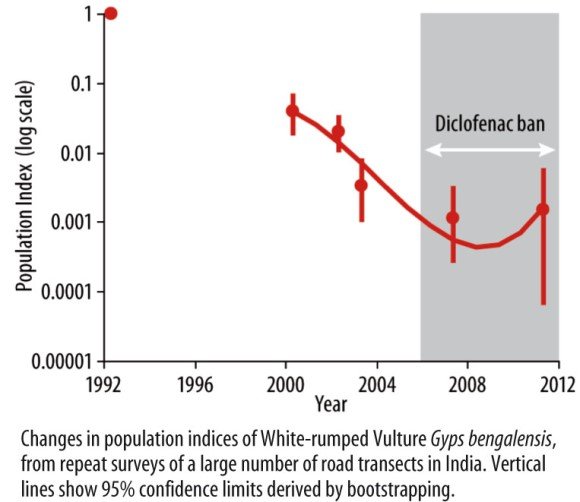
A compilation of studies in 2012 showed the effects on populations across India after the Diclofenac ban was enacted
The Indian government have realised over the past decade just how important the animals were to the Indian sub-continent, as the numbers of Vultures has dropped drastically, the number of feral Dogs has risen exponentially, Carrion that would previously be eaten by the Vultures is now a staple diet of the feral Canines.
Previously the Vultures were a useful animal to the wider ecosystem as their highly acidic stomachs were more than capable of digesting and destroying harmful pathogens commonly found within Carrion, feral Dogs and Rats do not have stomachs with these capabilities, as such the number of Rabies related deaths in the region is roughly 20,000 per year, this figure will likely rise in parallel with the increase of feral Dogs and Human populations.
The timeline for the outlaw of Diclofenac can be observed as such:
- 2006: India, Nepal and Pakistan ban the manufacture and importation of Diclofenac for Veterinary uses.
- 2008: India bans the manufacture, sale and use of Diclofenac in veterinary practises.
- 2015: India realise that Diclofenac for human consumption is being used for veterinary purposes still, they proceed to prohibit the manufacture of Diclofenac in vials larger than 3ml (Dosage for Humans), this causes the price of Diclofenac to rise making its use in veterinary practises to expensive.
- 2016 India begins long term studies in to at least 14 other widely used drugs to assess their ecological effects.
Aside from government intervention, organisations such as SAVE (Saving Asias Vultures from extinction) are developing the concept of Vulture safe zones that constitute an area of roughly 30,000 square kilometres surrounding key breeding locations, within these areas education of the local population as well as funding for the use of different veterinary practises will be of paramount important to the survival of the White-Rumped Vulture.
The organisation also hopes that eventually these sites can be used as the perfect location for future captive release programs, within the SAFE zones ‘Vulture Restaurants’ will also exist, these will consist of feeding stations whereby the Vultures will be supplied with 100% Diclofenec free food which should aid in Juveniles reaching sexual maturity which will allow the population to reach a positive trend, luckily data from a site in Nepal is showing positive results, you can support SAVE through this LINK should you feel like helping them.
Captive breeding programs will likely be a leading factor in the survival of the species, the International South Asian Vulture Recovery Plan Workshop established in 2004 proposed a detailed list of the requirements to prevent the extinction of the White-Rumped Vulture, the focal point of the report centred around the breeding centres themselves and the report stated that the facilities would need to accommodate a minimum of 25 breeding pairs per site.
The proposal has since led to significant success, 3 centres have been established in India, 1 in Pakistan and 1 in Nepal, all three of the centres have yielded successful results with over 300 Birds now in captivity, and, to the joy of everyone involved over 60 fledgling chicks across the sites, furthermore the sites are serving as rehabilitation centres for Vultures than have been poisoned in the wild, as such they are functioning as effective rehab and release facilities, whilst the numbers are small they are still impressive and are a positive step in the right direction.
Organisations that support these centres include WWF-Pakistan, Bombay Natural History Society and the RSPB, all of these organisations are helpful to the survival of many species and donations and/or volunteer work will always be appreciated.
Final Thoughts
Whilst the decline of these magnificent animals has been a direct result of Human encroachment, I can’t help but feel obliged to commend the measures being undertook by countries within their population range to make things right.
I very much doubt that when Diclofenac was being widely distributed for positive veterinary purposes the governing bodies were oblivious to the damage it would eventually cause, I feel this is an instance where you are so used to seeing something so common, that you don’t realise there’s a problem until it’s spiralled out of control.
Sadly recent reports have noted that the likelihood of quasi-extinction in many populations is roughly 51% over the next 15 years, in some regions such as Rampur the likelihood is 99% within two decades, obviously these numbers are not overly optimistic and they paint a sad picture of what to expect over the coming decades, hopefully by some miracle the concerted conservation work and education will lead to a rebound in their numbers, it would be sad to lose such an important animal to such a wide and diverse ecological habitat.
Content Sources
- IUCN Data
- White-Rumped Vulture Analysis
- White-Rumped Vulture Decription
- Diclofenac Decline
- Bird Life Diclofenac
- Bird Life Feeding Sites
More Endangered Species
If you found this edition of Endangered Species interesting, you may be interested in my previous posts:
- The Chinese Giant Salamander
- The Yangtze Finless Porpoise
- The Saiga Antelope
- The Javan Slow Loris
- The Kakapo
- The Red Panda
- The Vaquita
- The Amur Leopard
- The Northern White Rhinoceros
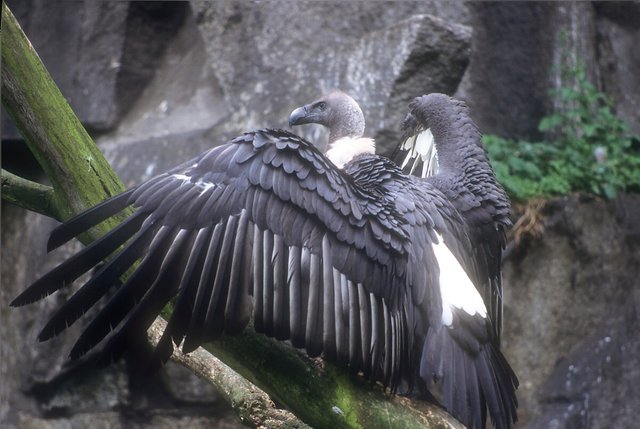
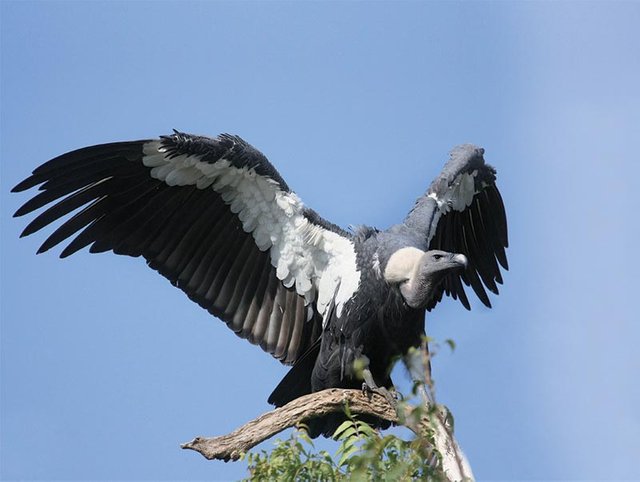
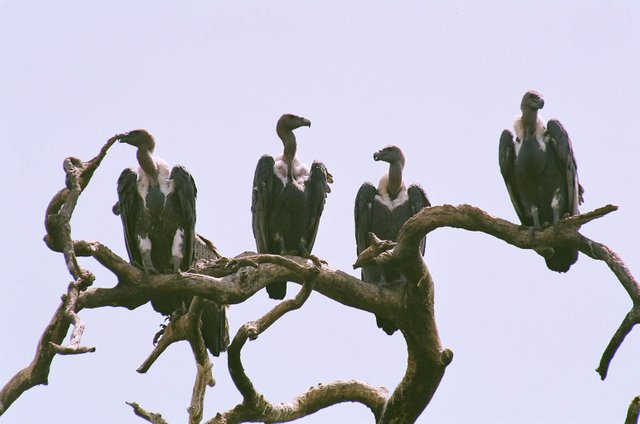
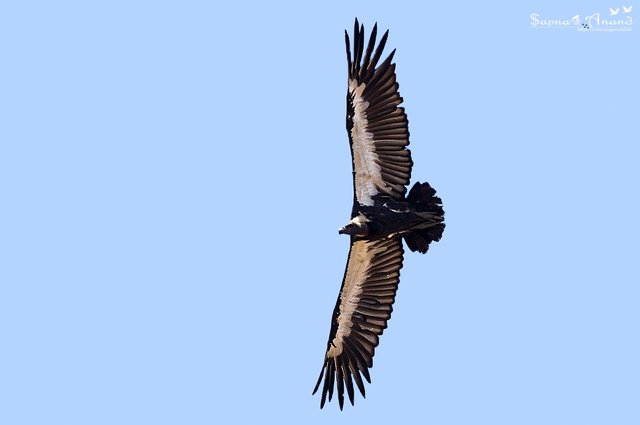
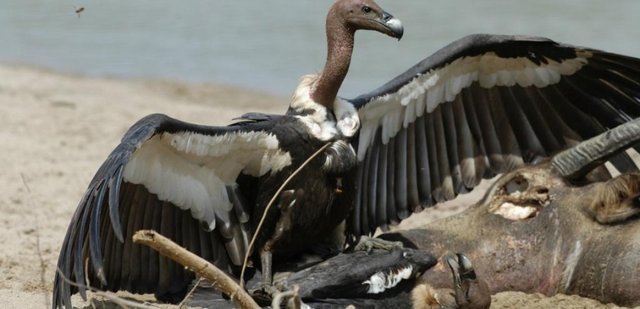
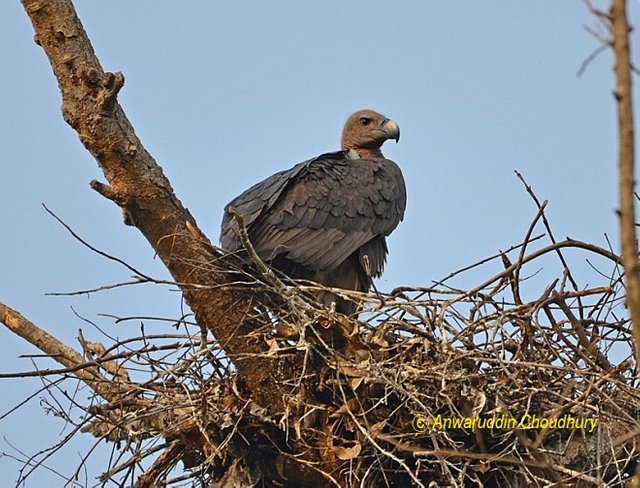
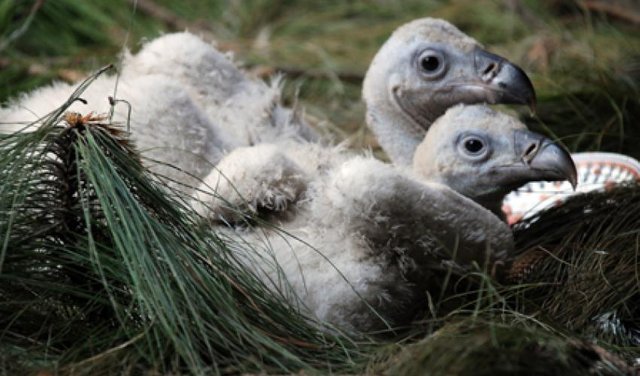
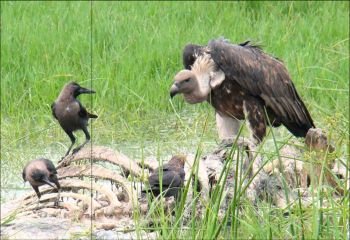
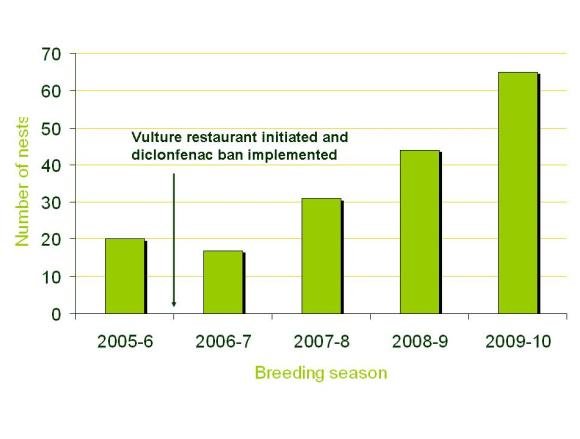
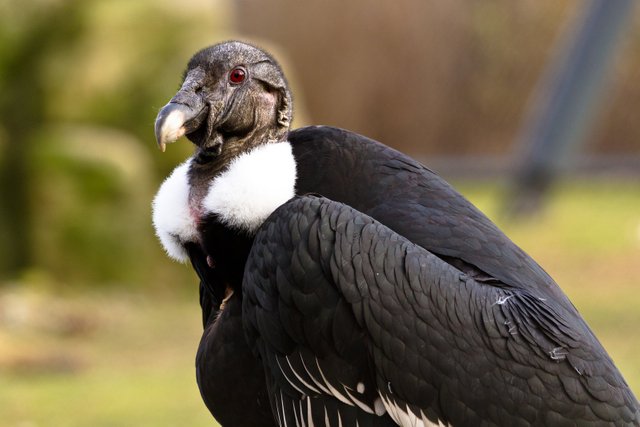
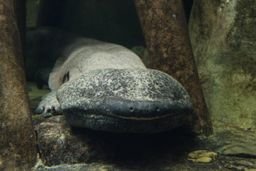
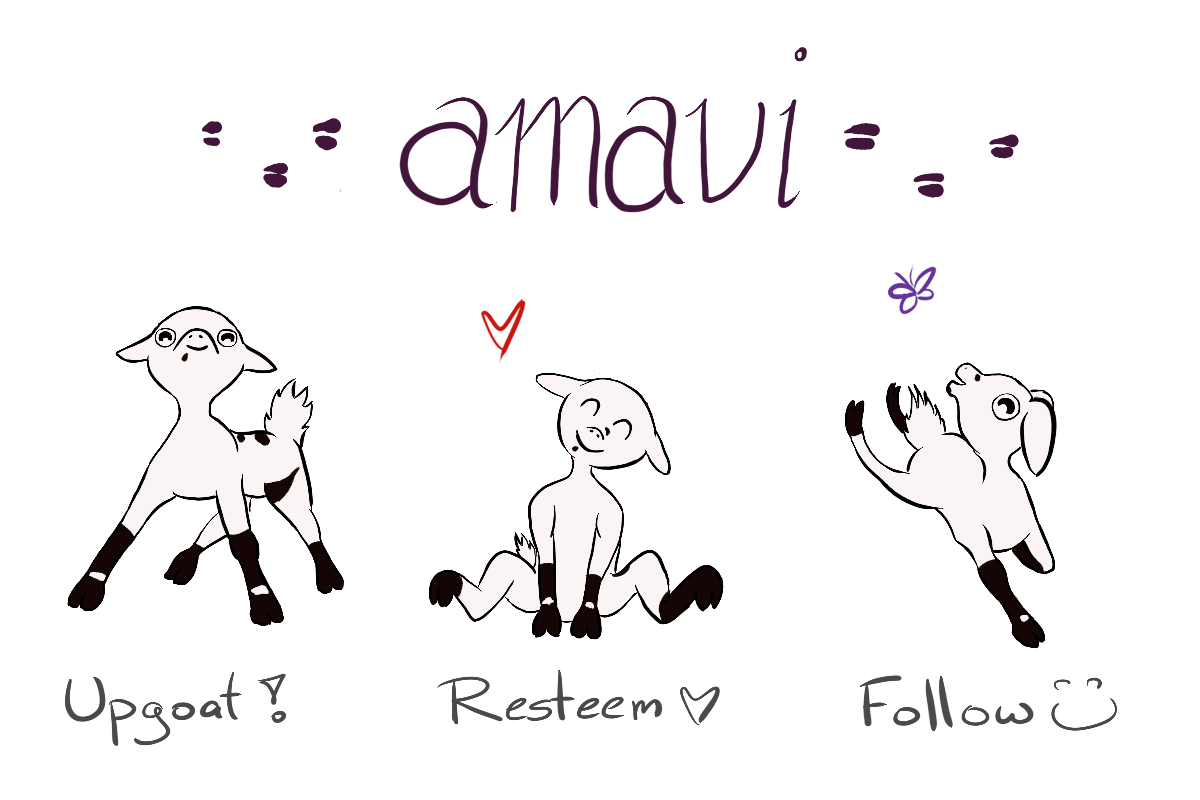
This is a test comment, notify @kryzsec on discord if there are any errors please.
Being A SteemStem Member
I feel very sorry for those roosting trees. What an amazingly-fast death rate for those unlucky enough to be attractive to the birds.
Horrible to learn about the chain reaction of the drug. Let's hope it falls out of favour with current users to the point it is no longer a part of the food chain for the birds. An awful way to go.
Do the birds have any natural predators?
Another wonderfully informative post, thanks. :)
p.s I still want to be able to catch up somehow regarding the radio show. ;)
As far as I am aware, there are no animals that naturally predate on this species as a food source but they are killed by tigers if they have a chance to.
Yes, I have tried to connect with you on discord to no avail! I’m sure at some stage we will finally come across one another!
In my opinion, with the technology of the future, we might perhaps be able to recover some species that are no longer with us.
Can you imagine bringing back to live something that was already not only dead, but extinct?
Either way, I think we need to be very careful and stop putting other species in danger, we now do not have the need to do it anymore, and have enough knowledge to realize when our actions need an urgent change of direction.
I have mixed feelings on this as it poses questions beyond just whether or not it would be beneficial to revive a species.
When a species disappears from an environment the entire ecosystem changes, if a species has been absent for say 100 years it may no longer be a beneficial addition to the environment it previously thrived in.
A great example of this is the current re-introduction of Eurasian Lynx in isolated areas of the UK, the Lynx has been absent from the UK for over 1200 years and a lot has changed in that time frame, for one previous competition for the Lynx (species of Wolf) are now also extinct and have been for over 500 years, their viable habitat has also shrunk with Human expansion and agricultural developments so we can't even be sure that prey animal populations within these isolated areas would be able to cope with a reintroduced and now invasive predator, which is one of the reasons why progress on this program is moving so slowly.
Whilst I believe it would be awesome to reverse our past mistakes, i'd not support bringing back a species that could only really exist in captivity, it would almost seem like a morbid vanity project or a living example of our previous errors.
Oh yes, this is exactly how I feel too. It is all very well in theory, but just because they can do something, doesn't mean they should do something! Science sometimes gets carried away by the idea and doesn't see the bigger picture.
As an Australian, I really hope they manage to do this with the Thylacine.
That's crazy! Thank you for sharing. The bird looks a lot like the one from the lion king. Is that correct, haha? 🌷
Although they look similar, the ones in the Lion King are more than likely to be White-Backed Vultures that are found in Africa, where as the White-Rumped is found in Asia. They are however, both from the same family group. I hope this answers your question, thank you for reading!
Congratulations @amavi! You have completed some achievement on Steemit and have been rewarded with new badge(s) :
Click on any badge to view your own Board of Honor on SteemitBoard.
For more information about SteemitBoard, click here
If you no longer want to receive notifications, reply to this comment with the word
STOPWow! What an informative and overall awesome post, even though it might not be about something happy. I love that you are educating people about these birds, and that you are spreading awareness for them. I have never even heard of this bird before. Personally, I think the bird is really beautiful. Resteemed. I make tee-shirts and designs for endangered and "in danger" animals to spread awareness for them, maybe I will do one for this bird eventually!
~Zoey